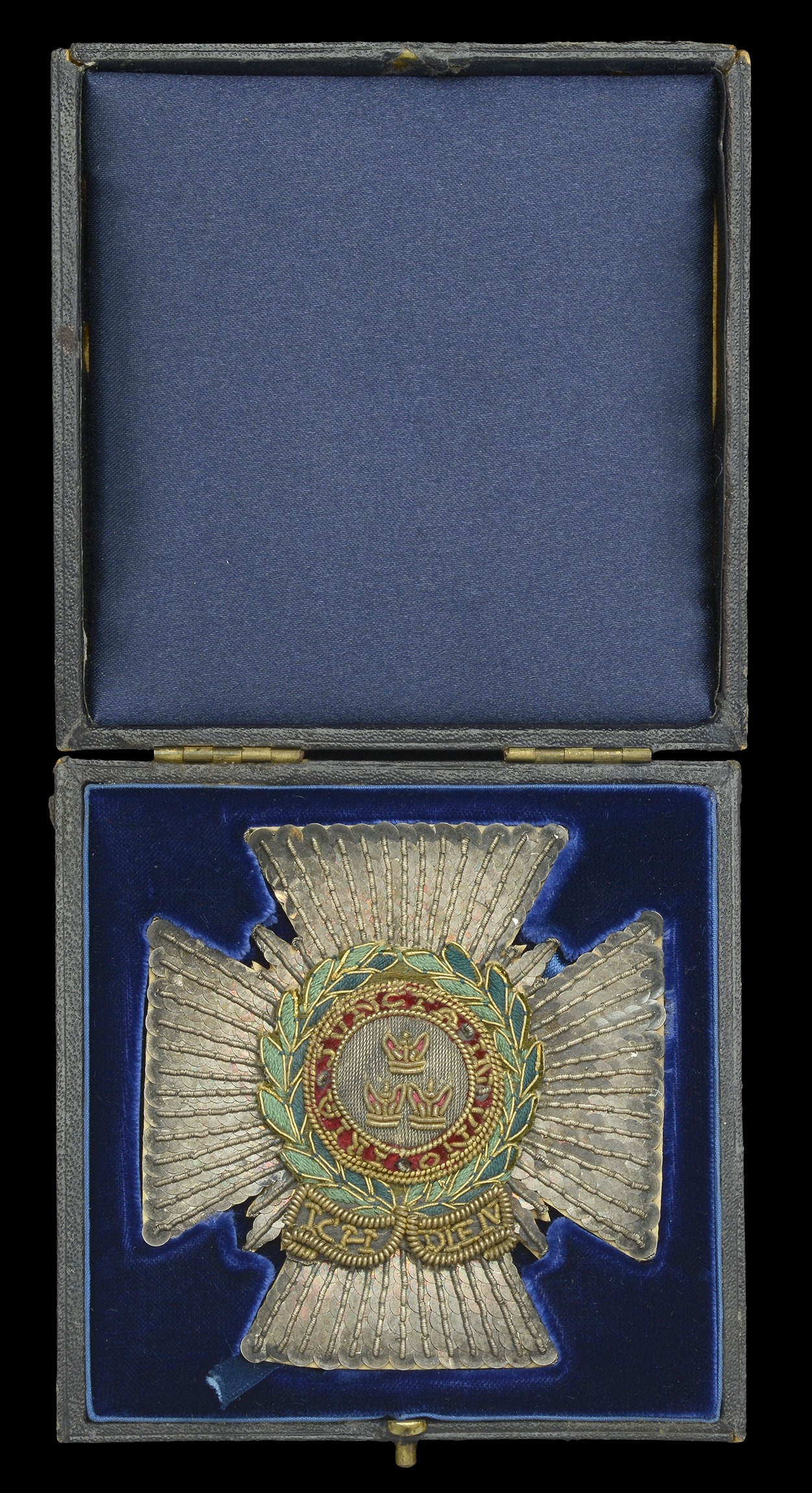The Most Honourable Order of the Bath, K.C.B. (Military) Knight Commander’s sequin and cloth embroidered breast star, the reverse with paper backing and maker’s label “LEWIS, Gold Laceman, Embroiderer, Sword Cutler &c. To the King, 33 St James’s Street’, with old ink inscription ‘Given to Sir Robert Gardiner May 17 1827’, contained in a contemporary fitted case, good very fine £500-£700 --- Robert William Gardiner was born on 2 May 1781, and entered the Royal Military Academy, Woolwich, as a cadet, 13 July 1795, and passed out as a second lieutenant royal artillery 7 April 1797. His subsequent military commissions were dated as follows: first lieutenant 16 July 1799, second captain 12 Oct. 1804, first captain 18 November 1811, brevet-major 27 April 1812, brevet-lieutenant- colonel 8 March 1814, brevet-colonel 22 July 1831, regimental colonel 24 November 1839, major-general 23 November 1841, lieutenant-general 11 October 1851, general 28 November 1854, and colonel-commandant 23 March 1853. In October 1797 Gardiner embarked for Gibraltar, then partially blockaded by the French and Spanish fleets, and the year after was present at the capture of Minorca. He commanded a detachment of twelve guns with the force under General Don sent to Stade and Cuxhaven in November 1805, as the advance of the army proceeding to Hanover under command of Lord Cathcart. The troops having returned to England in January 1806, Gardiner effected an exchange to Sicily, which he reached just after the battle of Maida. He served in Sicily, part of the time as aide-de-camp to General Fox and afterwards to Sir John Moore, returning with Moore to England from Gibraltar in December 1807. As the regulations prevented him from serving on Moore's staff on the expedition to Sweden, he exchanged in order to accompany Sir Arthur Wellesley to Portugal. He was present at Rolica and Vimeiro. He was brigade-major of the artillery in the Corunna retreat. In the Walcheren expedition he was present at the siege of Middleburg and Flushing, and was invalided for fever. On his recovery he proceeded to Cadiz, and his battery took a prominent part in the battle of Barossa. He joined Lord Wellington's army in February 1812, and received a brevet majority for his services at the siege and capture of Badajoz. He commanded a field battery at the battle of Salamanca, the capture of Madrid, the siege of Burgos (where he volunteered to serve in the siege batteries), and in the Burgos retreat. Early in 1813 Gardiner was appointed to the command of E (afterwards D) troop royal horse artillery, then attached to the 7th division, with which he fought at Vittoria in the Pyrenees, at Orthez, Tarbes, and Toulouse. He was made K.C.B. in 1814. In 1815 his troop was stationed in front of Carlton House during the corn riots, and subsequently proceeded to Belgium, where he commanded it through the Waterloo campaign and entered Paris. Gardiner was appointed principal equerry to Prince Leopold of Saxe-Coburg on the prince's marriage with the Princess Charlotte of Wales, and held the post until Prince Leopold became king of the Belgians, after which Gardiner continued to reside at Claremont. He was governor and commander-in-chief at Gibraltar from 1848 to 1855. Gardiner was the author of many valuable reports on professional subjects, which are said to have contributed largely to the improvement in the artillery service which began after 1848. Gardiner was a G.C.B. and K.C.H., and had the decoration of St. Anne of Russia for his services in Belgium and France, besides the Gold Cross with with 2 Clasps. The Princess Charlotte of Wales appears to have written personally, but unsuccessfully, to the Duke of Wellington, asking him to recommend Gardiner for Portuguese and Spanish decorations. When governor of Gibraltar, the queen of Spain sent him the Cross of Charles III, which the regulations of the service forbade his wearing. Gardiner married, on 11 Oct. 1816, Caroline Mary, eldest daughter of Sir John Macleod, adjutant-general royal artillery. General Sir Robert Gardiner died at Melbourne Lodge, Claremont, 26 June 1864, aged 83.









